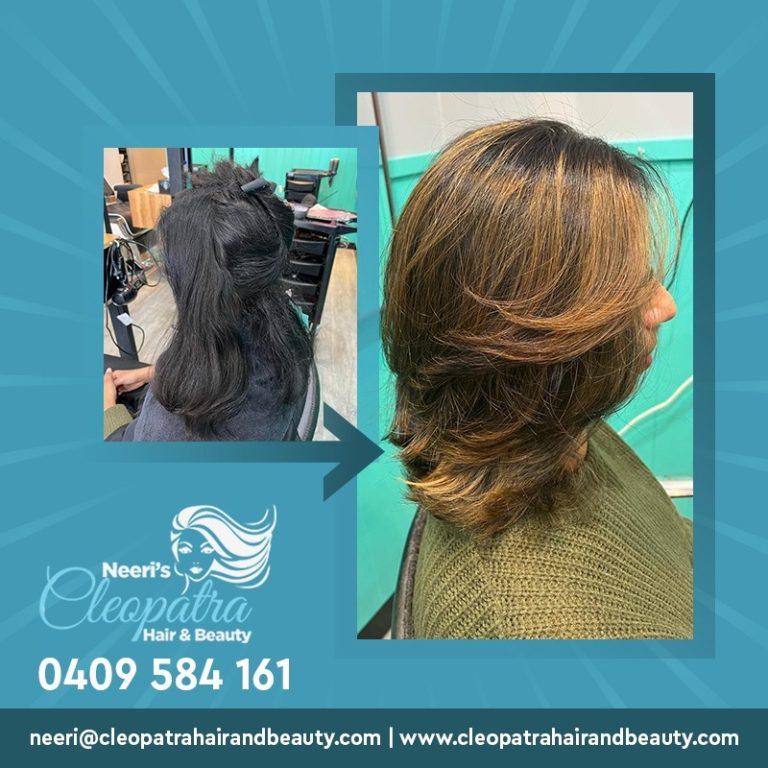Changes in hair color are dynamic processes that require careful consideration of undertones, maintenance, and natural versus artificial colors. To attain the desired results while maintaining the health of your hair, you must consult with a professional stylist. Knowing undertones aids in choosing the most attractive colors, and for best effects, blending several shades may take several sessions.
Prioritizing hair health throughout the procedure with appropriate care and upkeep is essential. In the end, changing one’s hair color provides a platform for creativity and self-expression, enabling people to experiment with various tones and looks until they discover the ideal combination that best suits their individuality and accentuates their inherent beauty. Visit now hair salon Watergardens and elevate your hair game to the next level

-
Understanding Your Hair
It’s important to know the current state, texture, and natural color of your hair before attempting any color changes. With this information, you can select the appropriate color and style for your type of hair.
-
Choosing the Right Color
When deciding on a new hair color, take into account aspects including skin tone, eye color, and personal style. Seeking advice from a qualified colorist can yield significant insights and suggestions.
-
Types of Hair Color
Permanent, semi-permanent, and temporary hair color products are among the varieties on the market. Every variety offers advantages and things to keep in mind, such longevity and possible hair damage.
-
DIY vs. Professional Color
Even while DIY hair coloring kits are practical and affordable, qualified colorists can provide knowledge and personalized solutions, particularly for intricate transformations or if you have certain hair difficulties.
-
Preparation
To get the greatest results, your hair must be prepped before coloring. This could entail preserving the skin and scalp from potential irritation, clarifying the hair to remove buildup, and doing a strand test to preview the color outcome.
-
Application Techniques
Proper application techniques are essential for accurate color distribution and minimizing damage, whether you’re using a box dye at home or going to a salon. Pay close attention to the directions, and if you’re confused, think about asking for help.
-
Aftercare
Proper maintenance is crucial to keeping your hair healthy and vibrant once you’ve attained the color you want. This can entail minimizing heat style, using shampoos and conditioners that are safe for colored hair, and arranging routine touch-ups as needed.
-
Maintenance
Remember that hair color is a temporary solution that needs to be maintained over time. The maintenance method includes repairing any damage, touching up the roots, and reviving faded color.
-
Avoiding Damage
If not done appropriately, hair color transformations—especially dramatic ones—may cause harm to the hair. Reduce damage by adhering to expert guidance, utilizing high-quality products, and including nourishing treatments in your regular hair care regimen.
-
Seek Professional Help
Seek advice from a professional colorist if you have any questions about the hair color change process or if you run into unforeseen problems. They are able to provide direction, adjustments, and solutions catered to your specific requirements.
Recall that experimenting with hair color ideas can be exciting and liberating, but in order to get the greatest results and preserve the health of your hair, you must approach the process carefully and sensibly.
-
Understanding Color Theory
Learn the fundamentals of color theory so that you may select hues that contrast or complement your characteristics. Shades with ash or violet undertones, for instance, may compliment those with colder undertones, whereas warm-toned people may like colors with golden or coppery tones.
-
Consideration of Hair Health
Examine your hair’s current state, taking into account elements such as dryness, brittleness, or damage already sustained. Pre-treatment or conditioning may be necessary if your hair is already weak in order to fortify and prepare it for the color change procedure.
-
Customization for Hair Texture
Different hair types, such as straight, wavy, curly, or coily, can have an impact on the appearance and behavior of color in relation to light. For best results, work with your colorist to customize the coloring method and formula to your unique hair texture.
-
Understanding Undertones
Take note of your natural hair color’s undertones and how they could affect the outcome. For instance, lightening black hair to a lighter hue could highlight underlying warm tones that should be brought out or balanced in order to get the right color.
-
Post-Color Adjustments
After the first change, be willing to make any necessary corrections or alterations to your hair color. Minor adjustments to tone or intensity may occasionally be required to get the ideal goal or handle any unanticipated consequences.
In conclusion, the world of hair color is vast and ever-evolving, offering endless possibilities for self-expression and style. Discover the ultimate hair transformation experience at our hair salon in Watergardens. Our skilled stylists specialize in creating personalized looks tailored to enhance your natural beauty. From trendy cuts to vibrant colors, indulge in top-notch services that leave you feeling confident and refreshed.
